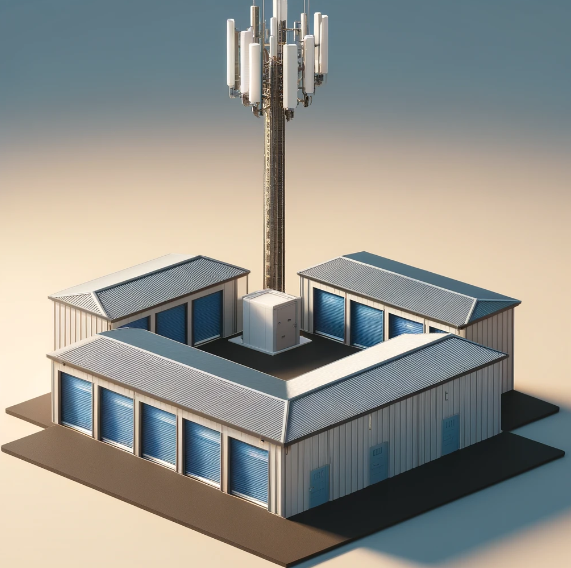What are small cells?
What Are Small Cells?
In our featured article, “The Impact of Emerging Wireless Technology on Cell Sites,” article we discussed macrocells, microcells, picocells, and femtocells. The key distinction between each of these is the area that they service: the list above goes from larger coverage area to smaller coverage area. When most people are thinking of cell sites, they are thinking of towers and rooftop sites which are considered macrocells in that they cover large areas.

However, wireless carriers have found that while macrocells are great for wide area coverage for voice services, they are not as efficient for data services. They have found that the closer the antenna is to the device trying to connect to it, the less interference there will be and the better the connection for data services. With the surge in popularity of data-hungry applications and devices (tablets, smartphones, etc.), industry pundits expect the amount of data flowing through these networks to increase exponentially over the next few years. Thus, these same pundits are forecasting exponential growth in the deployment of “small cells” or microcells, picocells, and femtocells.
These types of small cells are already in use. An example is Distributed Antenna Systems or DAS. DAS are systems comprised of an antenna infrastructure where the antennas are typically placed on the top of utility poles or other outdoor structures, or throughout a building (examples include sports arenas, large office buildings and underground public transit systems). There are many DAS networks already deployed. For instance, the City of Charlotte, NC has one deployed in its downtown area. New Orleans has a DAS network along Bourbon Street in the French Quarter. In both of cases, the networks were deployed as an alternative to traditional macrocells due to difficult zoning regulations that would otherwise prohibit the placement of towers or visible rooftop sites.
Contact Us
It is Steel in the Air’s belief that, going forward, small cells will see a significant increase in deployment but not necessarily by DAS networks where strings of nodes are deployed in one fell sweep. Instead, the carriers will start to deploy individual small cells on rooftops or the sides of buildings, on the top of street lights and utility poles. We have first-hand knowledge of this. A municipal client of ours was presented with a proposal from a wireless carrier who wanted to to lease.
“It is Steel in the Air’s belief that, going forward, small cells will see a significant increase in deployment but not necessarily by DAS networks where strings of nodes are deployed in one fell sweep.”
their utility poles. The carrier implied that they wanted a large number of poles, but upon further investigation, we found that the carrier simply wanted to pick those poles in a piecemeal fashion that would help them fill in their coverage gaps. The selected sites weren’t going to be used as part of one system but simply as fill-in sites to augment this carrier’s network.
How Does This Impact Property Owners?
For some, there will be no impact. In rural and less dense suburban areas, there won’t be a material impact. The carriers will still need wide area of coverage that only tall towers can provide.
For some landlords, there may be a negative impact. In dense suburban and urban areas, the carriers now have additional options to provide better service. This means that the carriers will have more flexibility to deploy their network and avoid problematic rooftop and ground lessors who are difficult to deal with or charge high rent. Locations that were previously “must have” properties for the carriers won’t necessarily be “must have” anymore. The carriers will look at their most costly leases and attempt to relocate them if they can justify the cost of relocation in future savings.
For some landowners, there will be a positive impact. Building owners in urban and dense suburban areas with structures that weren’t needed by the carriers before will be approached to lease the side or rooftop of their buildings for small cells. Municipalities with street lights, utility poles, and traffic signals will receive additional income from the deployment of small cells on their infrastructure.
At this point, we don’t recommend that most landowner or structure owners do anything other than be conscious that small cells will have a large impact on the siting of wireless infrastructure. Don’t renegotiate your leases at this time when approached by the lease optimization companies claiming that small cells will make your lease obsolete. At the same time, don’t start counting on future revenue for your building from small cells. Don’t worry about marketing your site, small cells are still in their infancy without any sizeable deployments yet other than DAS networks. For landowners or tower owners with unique sites that are coming up for expiration, contact us and we will help you determine the appropriate course of action for your specific site. For municipalities and large corporate landowners, do not sign master lease agreements or site management agreements with the carriers or tower companies that give them control or access to your properties for small cells at pre-determined rates.

Insider tips
While small cell and DAS deployment won’t decrease the need for towers in rural areas, we believe the trend in the next 10 years will, in fact, lean towards small cell deployment.
Consumer demand for higher speeds brought on by robust and rising Smartphone and tablet usage, and the pervasive 4G technology migration, will drive future demand for cell site leasing. The number of cell sites in the U.S. alone is expected to surpass 400,000 by 2015.










